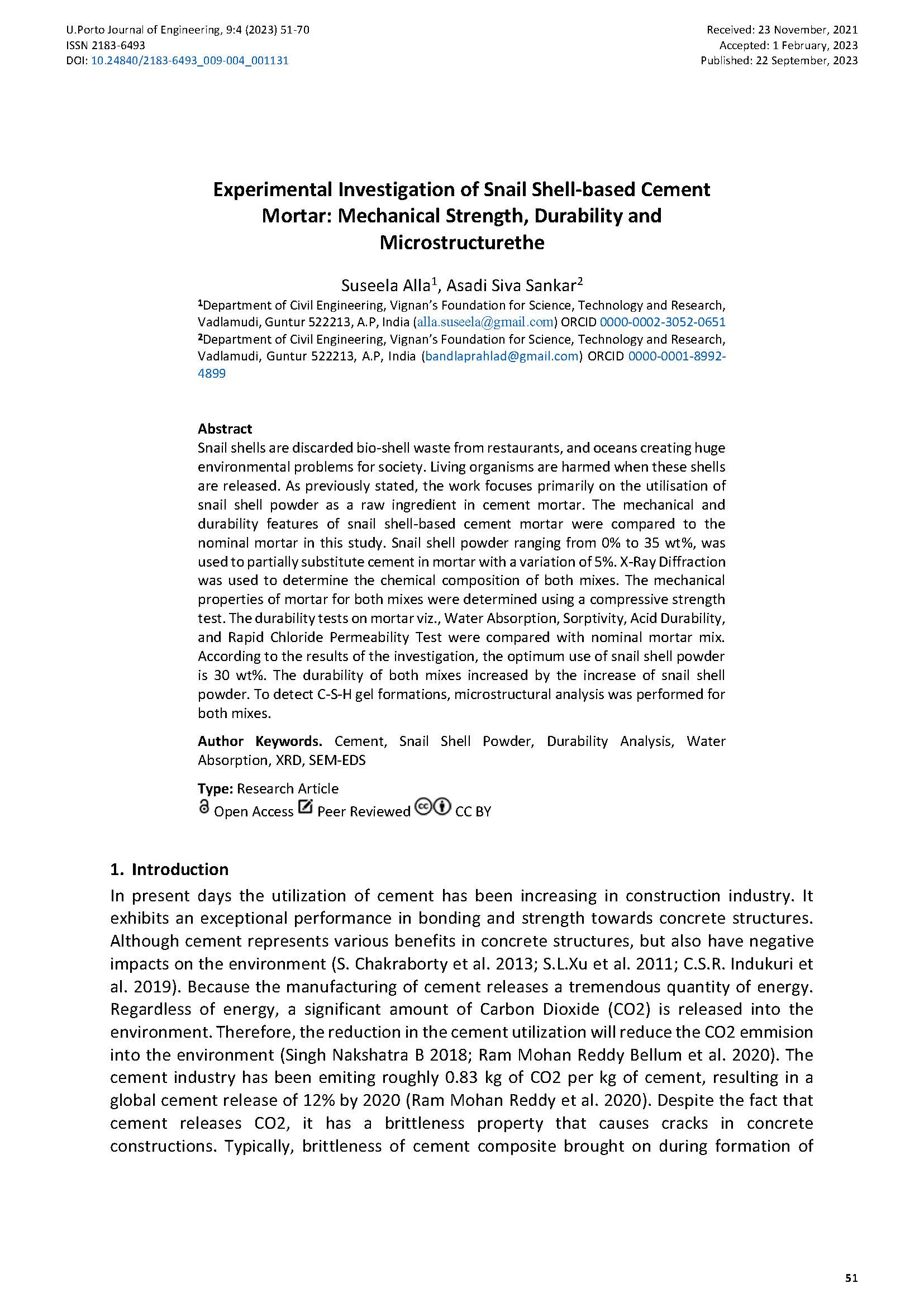Experimental Investigation of Snail Shell-based Cement Mortar: Mechanical Strength, Durability and Microstructure
Main Article Content
Abstract
Snail shells are the discarded bio-shell waste from restaurants, and oceans creating huge environmental problems for society. Living organisms are harmed when these shells are released. As previously stated, the work focuses primarily on the utilisation of snail shell powder as a raw ingredient in cement mortar. The mechanical and durability features of snail shell-based cement mortar were compared to the nominal mortar in this study. Snail shell powder, ranging from 0% to 35%, was used to partially substitute cement in mortar, with a variation of 5%. XRD (X-Ray Diffraction) was used to determine the chemical composition of both mixes. The mechanical properties of mortar for both mixes were determined using a compressive strength test. The tests on cement mortar viz., Water Absorption, Sorptivity, Acid Durability, and Rapid Chloride Permeability Test (RCP Test) were compared with nominal mortar mix. According to the results of the investigation, the optimum use of snail shell powder is 30%. The durability of both mixes increased by the increase of the snail shell powder. To detect the C-S-H gel formations, microstructural analysis was performed for both mixes.
Downloads
Article Details

This work is licensed under a Creative Commons Attribution 4.0 International License.
Authors who publish with this journal agree to the following terms:
- Authors retain copyright and grant the journal right of first publication with the work simultaneously licensed under a Creative Commons Attribution License that allows others to share the work with an acknowledgement of the work's authorship and initial publication in this journal.
- Authors grant the journal the rights to provide the article in all forms and media so the article can be used on the latest technology even after publication and ensure its long-term preservation.
- Authors are able to enter into separate, additional contractual arrangements for the non-exclusive distribution of the journal's published version of the work (e.g., post it to an institutional repository or publish it in a book), with an acknowledgement of its initial publication in this journal.
- Authors are permitted and encouraged to post their work online (e.g., in institutional repositories or on their website) prior to and during the submission process, as it can lead to productive exchanges, as well as earlier and greater citation of published work (See The Effect of Open Access).

